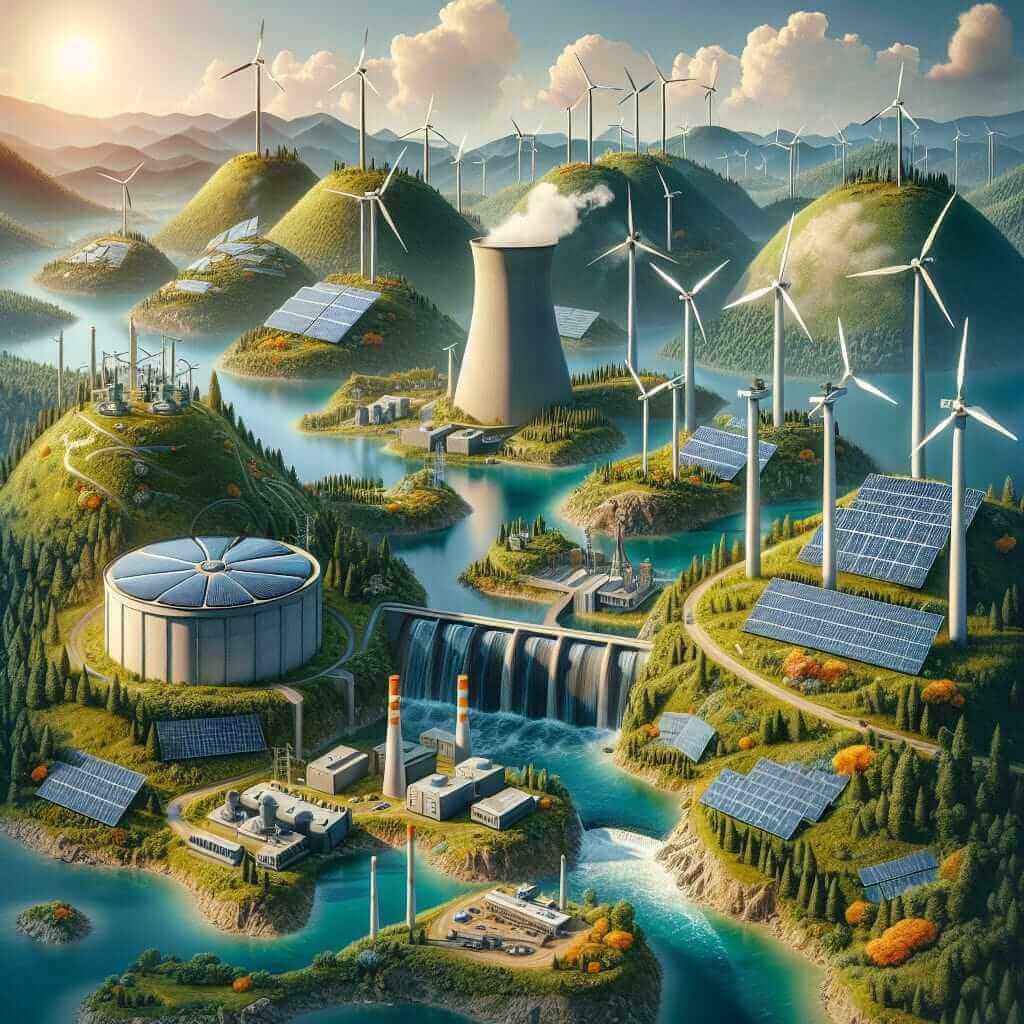The IELTS Reading section is a critical component of the IELTS exam, designed to assess your reading comprehension skills through various texts and question types. With a growing global focus on sustainability, topics such as “Technological advancements in renewable energy harvesting” have become increasingly relevant. Understanding this subject can significantly aid your preparation for the reading module, as it often appears in IELTS reading passages.
Reading Passage: Technological Advancements in Renewable Energy Harvesting
Renewable energy sources like solar, wind, and hydropower are paramount in combating climate change and reducing our reliance on fossil fuels. Recent technological advancements have significantly enhanced the efficiency and cost-effectiveness of renewable energy harvesting, making it a cornerstone of sustainable development.

The Passage (Medium Text)
The quest for sustainable energy solutions has led to groundbreaking technological advancements in the harvesting of renewable energy. Solar power, one of the most abundant energy sources, has seen significant improvements with the development of photovoltaic (PV) cells. These cells convert sunlight into electricity with increasing efficiency, now reaching conversion rates of over 22%. Innovators are continuously working on reducing the production costs and enhancing the durability of PV cells, making solar energy more accessible and affordable.
Wind energy has also witnessed remarkable progress. Advanced materials and aerodynamic designs have led to the creation of more efficient wind turbines. The latest models can generate power even at lower wind speeds, making wind farms viable in a broader range of locations. Furthermore, offshore wind farms have become a focal point, harnessing stronger and more consistent winds found over the oceans.
Hydropower, another crucial renewable source, has benefited from modernizing aging infrastructure and developing new technologies like underwater turbines, which can generate electricity from ocean currents. Small-scale hydropower systems are gaining popularity as they can be deployed in remote locations without significant environmental impact.
Emerging technologies, such as bioenergy and geothermal power, are also making strides. Bioenergy, derived from organic materials, is becoming more efficient with advancements in thermal and biochemical conversion processes. Geothermal energy harnesses heat from beneath the Earth’s surface, with enhanced geothermal systems (EGS) showing promise in improving the efficiency and reachability of this energy source.
Questions
Multiple Choice
-
What is one of the key advancements in solar power technology?
a) Increasing the size of solar panels
b) Enhancing the efficiency of PV cells
c) Reducing electricity consumption
d) Developing nuclear energy alternatives -
Which renewable energy source is being explored more extensively offshore?
a) Solar energy
b) Wind energy
c) Bioenergy
d) Geothermal energy -
How are advanced materials contributing to wind energy advancements?
a) By increasing the speed of wind turbines
b) By making wind turbines more expensive
c) By improving the aerodynamic designs of turbines
d) By decreasing the height of wind turbines
True/False/Not Given
- PV cells currently have a conversion rate of over 50%. (T/F/NG)
- Offshore wind farms can operate in areas without strong winds. (T/F/NG)
- Small-scale hydropower systems have a negligible environmental impact. (T/F/NG)
Matching Information
-
Match the renewable energy source with its corresponding advancement:
- Solar power
- Wind energy
- Hydropower
- Bioenergy
- Geothermal energy
i. Development of underwater turbines
ii. Enhanced geothermal systems
iii. Increasing efficiency of PV cells
iv. Advanced aerodynamic turbine designs
v. Improved thermal conversion processes
Answer Keys
- b) Enhancing the efficiency of PV cells
- b) Wind energy
- c) By improving the aerodynamic designs of turbines
- NG (The passage states a conversion rate of over 22%, not 50%)
- NG (The passage mentions offshore wind farms harnessing stronger winds found over the oceans)
- T (The passage states small-scale hydropower systems are gaining popularity without significant environmental impact)
Match the advancements:
- Solar power: iii. Increasing efficiency of PV cells
- Wind energy: iv. Advanced aerodynamic turbine designs
- Hydropower: i. Development of underwater turbines
- Bioenergy: v. Improved thermal conversion processes
- Geothermal energy: ii. Enhanced geothermal systems
Lessons
Common Mistakes
- Misinterpretation: Students often misinterpret question requirements, especially in True/False/Not Given questions. Always rely solely on the given passage to draw conclusions.
- Time Management: Struggling to complete reading sections within the allotted time is a frequent issue. Practice skimming and scanning techniques to enhance time efficiency.
Vocabulary Keywords
- Photovoltaic (PV) cells (noun) [ˌfoʊ.toʊ.voʊˈteɪ.ɪk]: Devices that convert light into electricity.
- Aerodynamic (adjective) [ˌer.oʊ.daɪˈnæm.ɪk]: Designed to reduce resistance to motion through air.
- Bioenergy (noun) [ˌbaɪ.oʊˈɛn.ər.dʒi]: Renewable energy produced from organic materials.
Grammar Points
- Passive Voice: Often used in technical writing to focus on actions rather than who performs them. For instance, “PV cells are developed to increase efficiency…”.
- Relative Clauses: Important for adding extra information without starting a new sentence. For example, “wind turbines, which harness wind energy, are becoming more efficient”.
Tips for High Reading Scores
- Practice Regularly: Consistency is key. Regular practice of reading passages and answering questions helps improve speed and accuracy.
- Understand the Instructions: Carefully read and understand the question instructions to avoid common pitfalls.
- Expand Vocabulary: A wide range of vocabulary helps in comprehending diverse reading topics effectively.
- Use Time Wisely: Allocate time wisely between reading passages and answering questions. Prioritize sections that you find easier to accumulate more points.
By familiarizing yourself with such topics and practicing diligently, you can significantly enhance your reading skills, preparing you thoroughly for the IELTS exam.